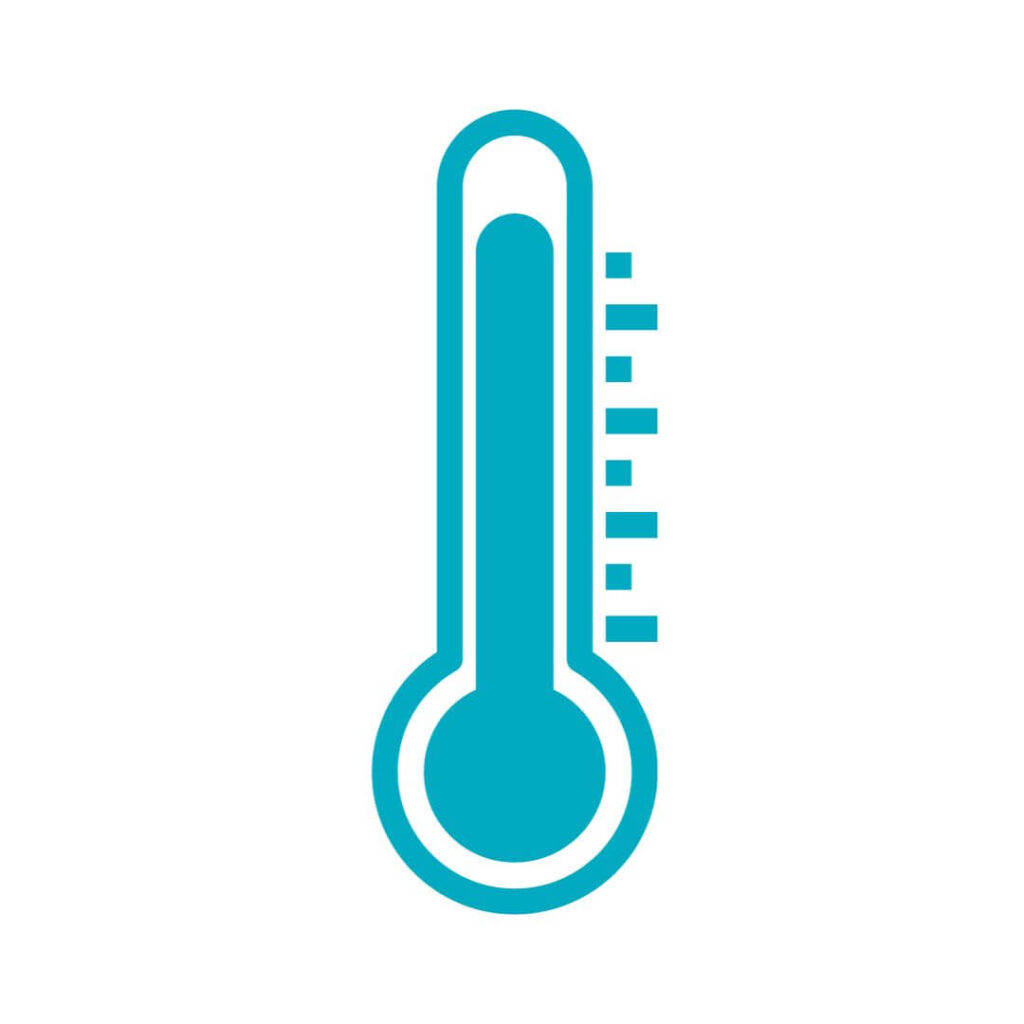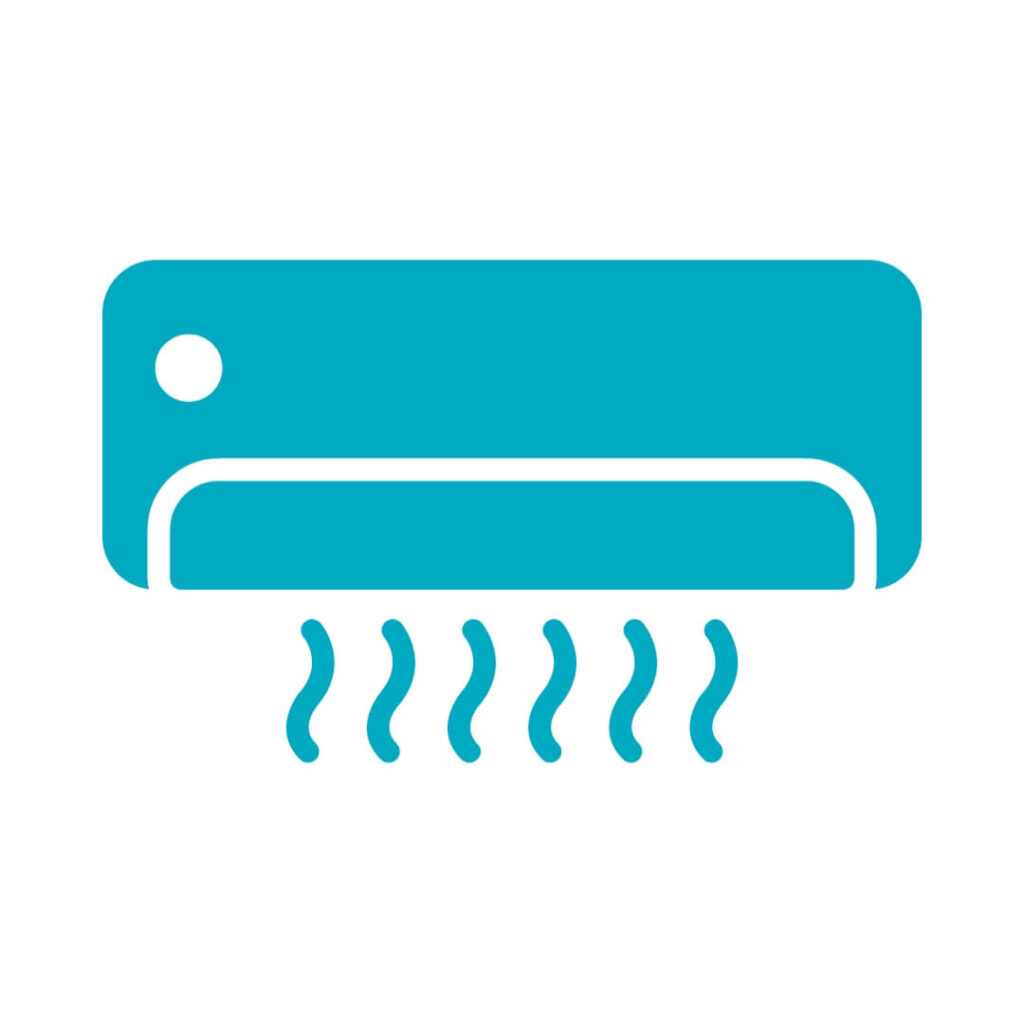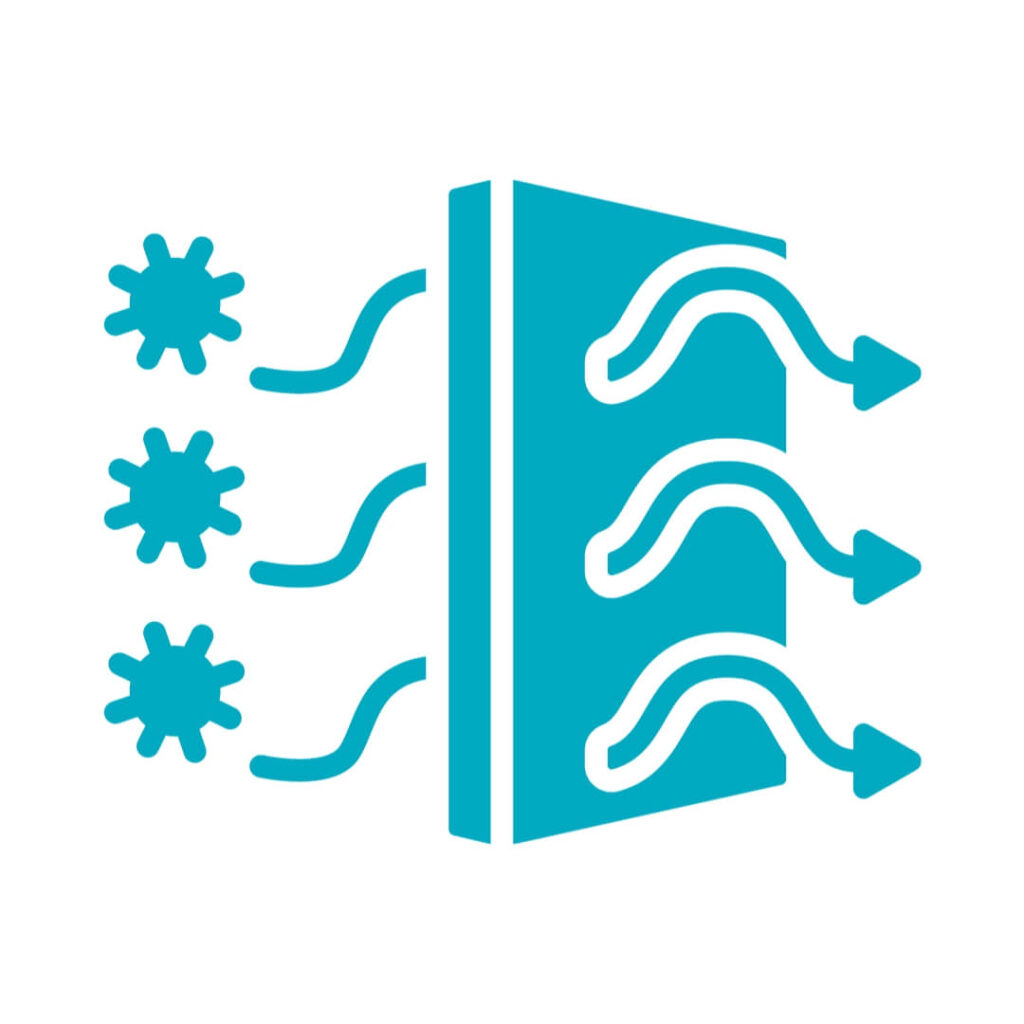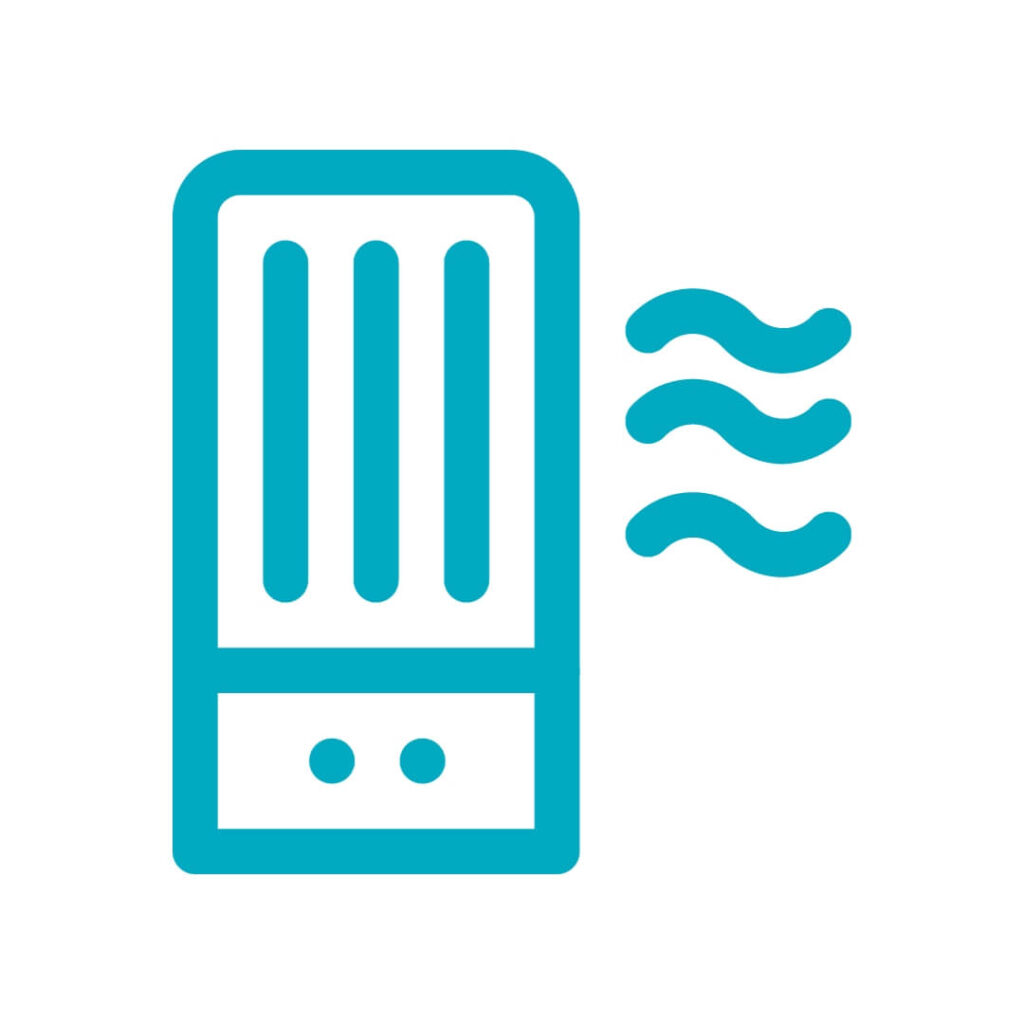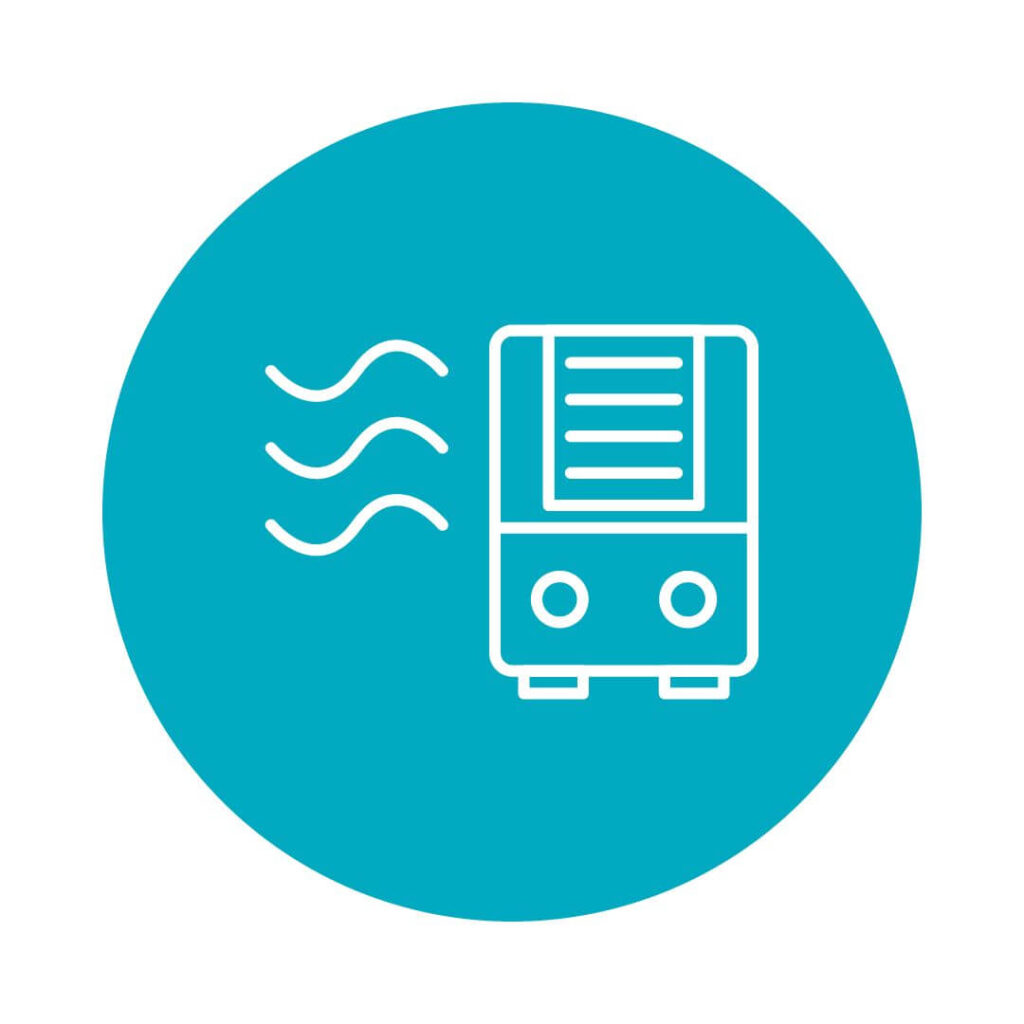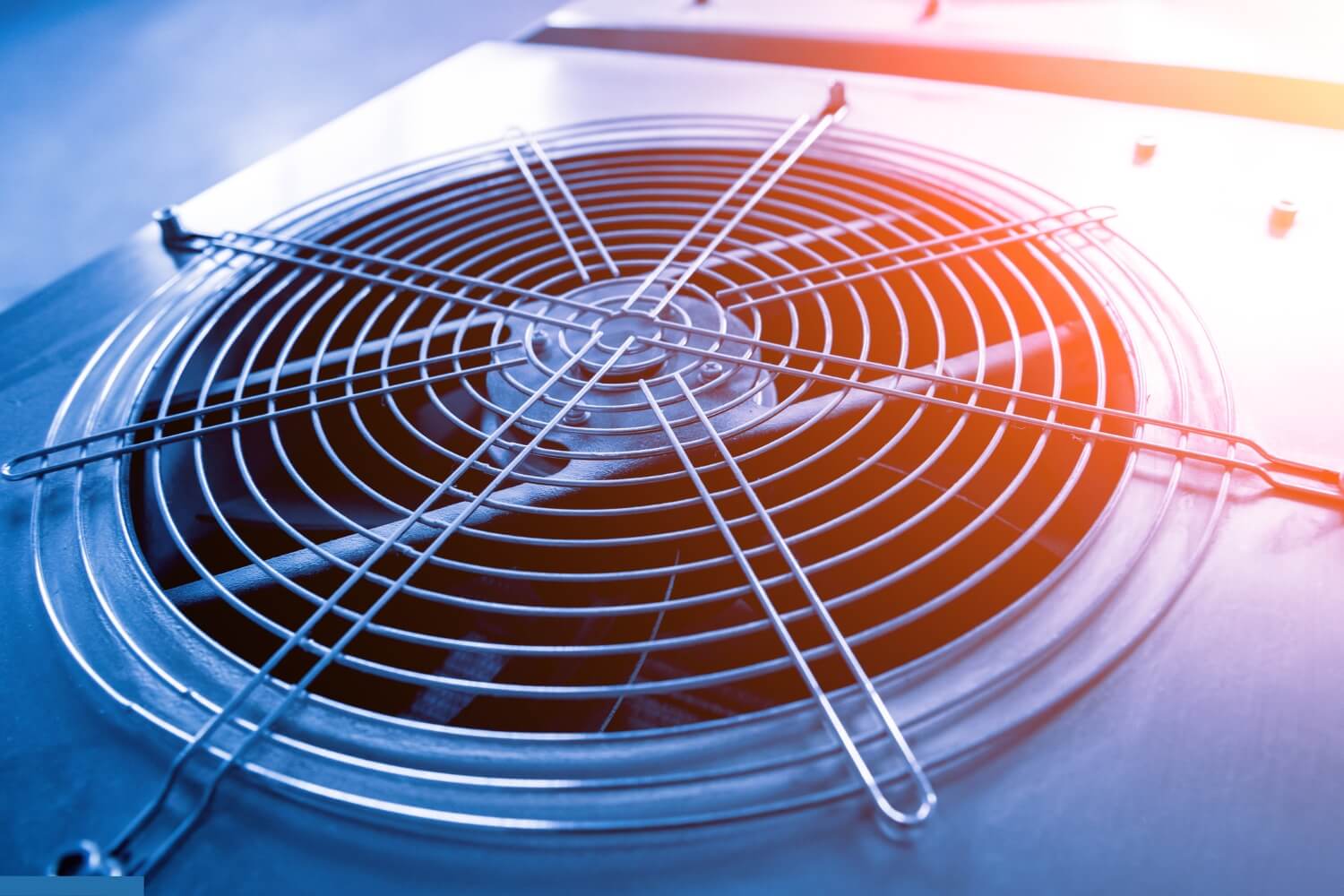
SERVICING: CALGARY & THE CMR
YORK FURNACE & AC REPAIR
Are you in need of dependable York furnace and air conditioner repair or installation services in Calgary? You came to the right place. One Stop HVAC offers 24/7 repair services for all York products. Call us today to book your appointment!
Same / Next Day
Service 24/7
Rating 5/5
Google Reviews
Licensed TSSA
Technicians
Served Over 1000
Local Residents
Get Your Free
Estimate Today
Great Prices
Guaranteed
YORK HVAC SERVICES
Please Select One Of The Following:
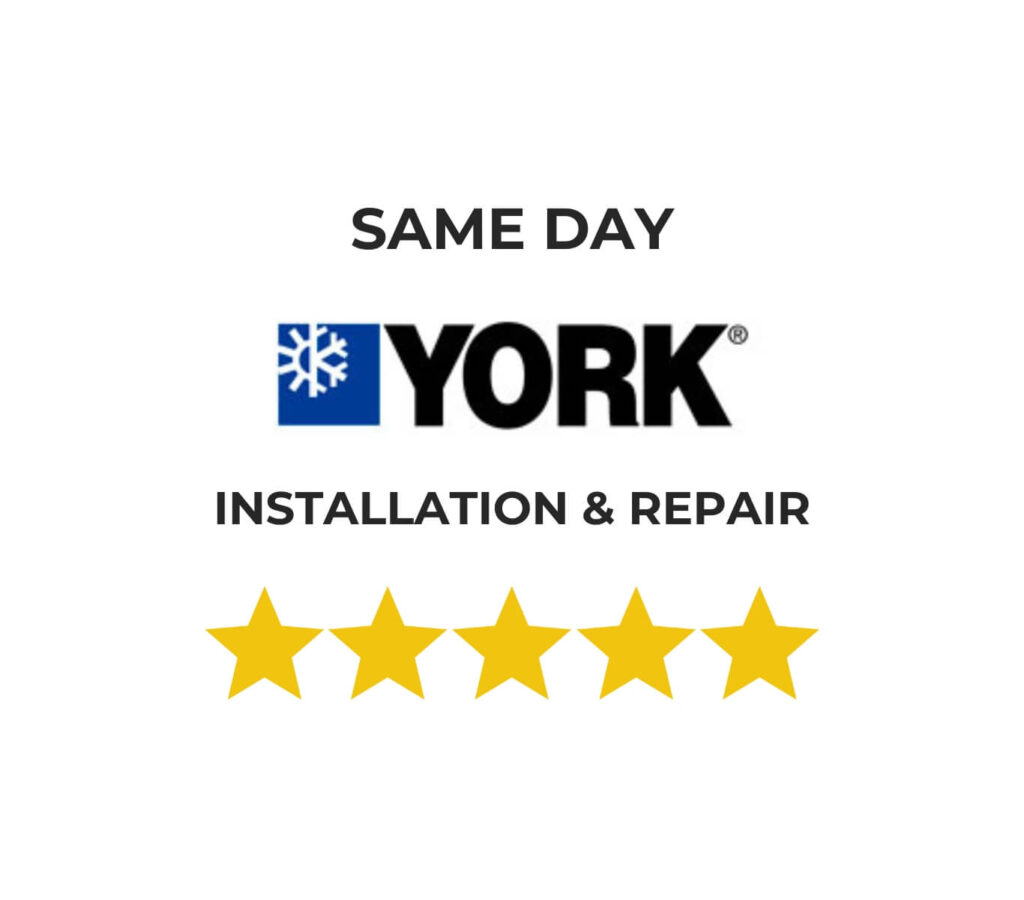
Same-Day Emergency York Furnace Repair
The last thing you want in the winter is a faulty furnace. As the weather gets cooler, a warmer home is exactly what you need. Our fast and efficient York furnace repair and installation services are top-rated for all your furnace needs in Alberta.
Here at One Stop HVAC, we are committed to providing exceptional service with quality workmanship. Our team of skilled professionals are here to help, whether you are in need of a routine maintenance check, a repair, or a new York furnace installation. We know how important it is for you to have a reliable furnace, that’s why you can count on us to ensure your home is warm and cozy during the winter months.
Possible reasons for your York furnace not turning on:
Power Supply: Confirm that the furnace is receiving electricity and ensure the power supply is in working order.
Thermostat Settings: Verify the thermostat settings to ensure correct configuration, and replace the batteries if needed.
Ignition System: If the issue persists, there may be a problem with the ignition system. It is advisable to consult a professional technician for a comprehensive inspection.
Control Board: A malfunctioning control board could also be a potential cause. Seek professional assistance for a thorough diagnosis and necessary repairs.
If you encounter any difficulties, our skilled technicians at One Stop HVAC are prepared to help. Feel free to reach out to us for prompt and dependable service.
Your furnace might blow cold air due to various reasons:
Thermostat Setting: Check if the thermostat is set to the desired temperature and in the “Heat” mode.
Air Filters: Replace dirty or clogged air filters regularly to maintain proper airflow.
Gas Supply: Ensure there are no issues with the gas supply.
Pilot Light/Ignition System: If malfunctioning, they may prevent the furnace from producing heat.
Thermocouple: A faulty thermocouple could shut off the gas prematurely.
Flame Sensor: Malfunctions may cause the furnace to shut off the burners.
Blower Motor: Issues with the blower motor can result in the circulation of cold air.
If you can’t resolve the issue, it’s best to contact us for assistance.
No, unusual noises are often indicators of underlying problems.
Potential Causes:
- Insecure Blower Motor: Verify the stability of the blower motor. If it’s loose, it can generate disruptive sounds during operation.
- Damaged Belts: Check for damaged or loosely fitted belts, as they can contribute to loud noises. Replace or tighten as needed.
- Worn-out Bearings: Components with worn bearings may result in persistent noises. Seeking professional attention is recommended for bearing inspection and replacement.
Important: Neglecting these noises may lead to more significant issues and potential breakdowns.
For a comprehensive inspection and resolution of the noise problem, it’s advisable to reach out to a professional HVAC technician. Our team at One Stop HVAC is prepared to assist you!
To improve weak airflow from your York furnace, follow these simple steps:
- Change Air Filters: Replace dirty filters regularly for better airflow.
- Clean Vents and Registers: Ensure vents and registers are open and clean.
- Check Ductwork: Look for leaks or blockages in the ducts. Seal leaks and insulate ducts.
- Inspect Blower Motor: Clean the blower motor and its parts. If it’s faulty, consider professional help.
- Adjust Blower Speed: If possible, adjust the blower speed for improved airflow.
- Ensure Proper Furnace Size: Confirm the furnace is the right size for your home.
- Consider Booster Fans: Install duct booster fans for better airflow in specific areas.
- Schedule Professional Maintenance: Regular HVAC maintenance can identify and fix issues affecting airflow.
If problems persist, consult a professional HVAC technician for further assistance.
Yes, you can perform regular maintenance on your York furnace to help prevent major problems and ensure its efficient operation. Here are some maintenance tasks you can typically handle on your own:
- Change Air Filters: Regularly replace the air filters to keep the airflow smooth.
- Clean Vents and Registers: Keep vents and registers clean for good airflow.
- Check Thermostat: Ensure the thermostat is set right and has working batteries.
- Inspect Ductwork: Look for and seal any leaks in the ducts.
- Keep Furnace Area Clean: Clear the space around the furnace for safety and proper ventilation.
- Inspect Flame Sensor: If applicable, check and clean the flame sensor for proper ignition.
- Lubricate Moving Parts: If needed, lubricate moving parts as recommended by the manufacturer.
Remember, for more complex tasks, it’s best to schedule professional maintenance annually. Regular upkeep not only prevents issues but also improves efficiency. Always refer to your furnace manual and seek professional help from us if needed.
Reliable York AC Repair & Installation Services
We all know how hot Canadian summers can get, that’s why having a functioning AC unit is extremely important. One Stop HVAC can provide you with customized solutions that will be specific to your needs, whether you need a new York AC unit installed or you need your existing York AC unit repaired, we can help you.
Quick and efficient maintenance and repairs are essential for optimum performance. This will also prolong the lifespan of your York AC unit. Ignoring small issues can lead to bigger problems, which can cause inconvenience, discomfort, and possibly expensive repairs.

If your York AC isn’t cooling well, here are simplified steps to troubleshoot:
- Check Air Filters: Replace dirty filters for better airflow.
- Inspect Vents: Ensure all vents are open and unblocked.
- Verify Thermostat: Confirm the thermostat is set correctly for cooling.
- Refrigerant Levels: If suspecting low levels, contact a professional for a check and recharge.
- Clean Coils: Schedule professional maintenance to clean evaporator and condenser coils.
- Check Compressor: If the compressor is faulty, seek professional help.
- Ensure Correct Unit Size: Consult with a professional to confirm the right AC unit size.
- Inspect Ductwork: Look for leaks or blockages in the ducts.
- Clear Condenser Unit: Keep the outdoor unit free from debris.
If issues persist, contact a professional HVAC technician for a thorough inspection and assistance. Regular maintenance helps prevent problems and keeps your AC running efficiently.
It’s not normal for your York air conditioner to leak water inside your home. If you see water, there might be an issue. Here are simplified reasons and solutions:
- Clogged Drain Line: Check for clogs and clear them.
- Dirty or Frozen Evaporator Coil: Schedule pro maintenance to clean the coil.
- Condensate Pan Issues: Inspect for overflow or cracks. Fix clogs and replace a cracked pan.
- Condensate Line Installation: Ensure it’s properly installed for good drainage.
- Low Refrigerant Levels: Contact a pro to check and recharge refrigerant.
- Condensate Pump Problems: Check and replace if needed.
- Air Handler Seal: Make sure the air handler is sealed properly.
If you spot water, turn off the AC and get a technician to check and fix the problem. Regular maintenance helps prevent such issues.
If your York AC has a bad smell when running, here are simplified reasons and solutions:
- Dirty Air Filters: Solution: Change filters regularly to avoid bad odors.
- Mold or Mildew: Solution: Clean coils, drain pan, and line. Use mold inhibitors.
- Clogged Drain Line: Solution: Clear any blockages in the drain line.
- Dirty Coils: Solution: Schedule pro maintenance to clean coils.
- Pests or Animals: Solution: If there’s a persistent bad smell, get a professional to check for unwanted visitors.
- Burning Smell: Solution: If it smells like burning, turn off the AC and call a professional for inspection.
- Gas Leak: Solution: If you smell gas, evacuate and contact emergency services.
If the smell continues or you’re unsure, consult a technician. Regular pro maintenance helps prevent such issues.
Possible Causes and Recommended Actions:
Rattling Noises: If you hear rattling sounds, it may indicate loose components. Check for any loose screws or panels. If the problem persists, turn off the AC and seek professional assistance promptly to prevent further damage.
Grinding Sounds: Grinding noises could suggest issues with the fan motor or blower assembly. Immediately turn off the AC to prevent additional damage and contact a professional technician for thorough inspection and necessary repairs.
Important: Address unusual noises promptly to prevent potential damage and ensure the efficient operation of your York AC.
If you’re experiencing strange noises from your AC unit, our skilled technicians at One Stop HVAC are prepared to conduct a comprehensive inspection, identify the source of the problem, and carry out the needed repairs. Reach out to us for swift and reliable service to restore the quiet and effective operation of your York AC.
If your York AC won’t turn on, consider these simplified solutions:
- Check Power Supply: Ensure the unit is getting power. Check the circuit breaker and the disconnect switch to make sure they are on.
- Verify Thermostat Settings: Confirm the thermostat is set to a desired temperature and in the “Cool” mode. Change thermostat batteries if needed.
- Inspect Capacitor: A faulty capacitor can prevent the AC from starting. Contact a professional technician for inspection and potential replacement.
- Clear Condensate Pan and Drain Line: Ensure the condensate pan isn’t full, and the drain line is clear to prevent a safety switch from stopping the AC.
- Check Float Switch: The float switch may trip if there’s a drainage issue. Check for water and clear any blockages.
- Address Refrigerant Levels: Low refrigerant levels can affect the AC. Consult a professional technician to check for leaks and recharge if needed.
- Inspect Compressor and Capacitor: A faulty compressor or capacitor may be the issue. Seek professional help for diagnosis and repairs.
- Check Electrical Connections: Inspect wires for any damage or looseness. If unsure, contact a professional technician.
If the AC still doesn’t turn on after these checks, it’s best to consult a qualified HVAC technician for a thorough inspection and necessary repairs.
Heat Pumps, Thermostats and More
York Heat Pump Repair & Installation
York heat pumps integrate both heating and cooling capabilities into a single unit, providing year-round comfort. While these appliances are valuable additions to Canadian properties, a breakdown can leave you without a HVAC system. That’s why One Stop HVAC provides 24/7 emergency repairs for York heat pumps and same-day appointments for York heat pump installations. We aim to be your reliable partner, ensuring your home always has a functional HVAC system.
If your York heat pump won’t turn on, several factors could be causing the issue. Here are some common reasons and potential solutions:
- Check Power Supply: Make sure the circuit breaker and disconnect switch are on.
- Verify Thermostat: Confirm the thermostat is set correctly and has working batteries.
- Emergency Shut-Off Switch: Ensure it’s in the “on” position.
- Clean or Replace Air Filters: Dirty filters can hinder operation.
- Refrigerant Levels: Consult a professional for a check and recharge if needed.
- Check Capacitor and Contactor: These parts may need inspection or replacement.
- Inspect Thermostat: A faulty thermostat may not signal the heat pump. Consider replacement.
- Tripped High-Pressure Switch: Have a technician inspect and reset if needed.
If the issue persists, contact us for further assistance.
If your York heat pump is not heating or cooling, several issues could be causing the problem. Here are simplified reasons and potential solutions:
- Thermostat Settings: Solution: Check that the thermostat is set to the desired temperature and the correct mode (heat or cool).
- Clogged Air Filters: Solution: Dirty filters can restrict airflow. Clean or replace the filters according to the manufacturer’s recommendations.
- Refrigerant Issues: Solution: Low refrigerant levels can affect heating or cooling. Consult a professional for a check and recharge if needed.
- Faulty Thermostat: Solution: If the thermostat is malfunctioning, it may not send the right signals. Consider having a technician check and replace the thermostat if necessary.
- Defective Capacitor or Contactor: Solution: Faulty capacitor or contactor can affect the heat pump’s operation. Consult with a professional for inspection and potential replacement.
- Emergency Shut-Off Switch: Solution: Ensure the emergency shut-off switch is in the “on” position.
- Tripped High-Pressure Switch: Solution: This safety feature may trip in case of issues. Have a technician inspect and reset if needed.
If you’ve checked these factors and the heat pump is still not heating or cooling, it’s recommended to contact us for a thorough inspection and necessary repairs. We can identify and address specific issues affecting your York heat pump’s performance.
If your York heat pump has ice build-up, here are simplified steps to address the issue:
- Turn Off the Heat Pump: Switch off the heat pump to prevent further ice accumulation.
- Check Air Filters: Inspect and replace dirty air filters, as clogged filters can lead to reduced airflow and ice formation.
- Thaw the Ice: Allow the ice to melt naturally. Do not attempt to chip away the ice, as it can damage the coils.
- Inspect Refrigerant Levels: Low refrigerant levels can contribute to ice build-up. Consult with a professional technician to check for leaks and recharge the refrigerant if needed.
- Clear Obstructions: Ensure there are no obstructions around the outdoor unit that may impede airflow.
- Check Thermostat Settings: Confirm that the thermostat is set correctly for heating mode.
- Inspect Defrost Control: If equipped, check the defrost control to ensure it is functioning properly.
- Schedule Professional Inspection: If the issue persists or recurs, contact a qualified HVAC technician for a thorough inspection and necessary repairs.
Remember, chipping away ice or using sharp objects can cause damage to the heat pump components. It’s essential to allow the ice to melt naturally and address the underlying causes to prevent future ice build-up. Regular maintenance by a professional technician can help prevent issues like this and keep your York heat pump operating efficiently.
Strange noises from your York heat pump could indicate various issues. Here are simplified reasons and potential solutions:
- Rattling or Vibrating: Possible Causes: Loose parts or panels. Solution: Tighten any loose components and panels.
- Hissing or Whistling: Possible Causes: Air leaks, clogged filter, or refrigerant issues. Solution: Seal air leaks, replace or clean filters, and consult a professional for refrigerant checks.
- Clicking or Ticking: Possible Causes: Electrical issues, such as a faulty thermostat or relay switch. Solution: Have a professional technician inspect and repair electrical components.
- Squealing or Screeching: Possible Causes: Belt issues, like wear or misalignment. Solution: Inspect and replace the belt if necessary.
- Buzzing: Possible Causes: Loose parts, electrical issues, or condenser coil problems. Solution: Tighten loose parts, inspect electrical components, and schedule maintenance for the condenser coil.
- Thumping or Clanking: Possible Causes: Loose or damaged parts. Solution: Inspect for loose or damaged parts and have them repaired or replaced.
- Grinding Sounds: Possible Causes: Issues with the fan motor or blower assembly. Solution: Turn off the heat pump immediately and contact a professional technician for inspection and repairs.
If unusual noises persist or you’re unsure about the cause, it’s best to contact us for a thorough inspection. Regular professional maintenance can also help prevent strange noises by addressing potential issues before they become major problems.
Identifying a faulty York heat pump compressor may require professional inspection, but you can look for certain signs that may indicate an issue. Here are simplified steps:
- No Cooling or Heating: If your heat pump is not providing adequate heating or cooling, it could signal compressor problems.
- Unusual Noises: Grinding, clicking, or other unusual noises from the outdoor unit may indicate compressor issues.
- Tripped Circuit Breaker: If the compressor is drawing too much current, it may trip the circuit breaker.
- Hot Outdoor Unit: A compressor working harder than usual may cause the outdoor unit to become excessively hot.
- Uneven Cooling or Heating: If some rooms are not reaching the desired temperature, it could be a compressor issue.
- Hissing Sounds: Refrigerant leaks, often accompanied by hissing sounds, can be a sign of a compressor problem.
If you notice any of these signs, it’s crucial to contact us for a thorough inspection and diagnosis. Attempting to repair or replace a compressor without proper training and equipment can be hazardous and may void warranties. Professional technicians have the expertise to accurately diagnose compressor issues and recommend appropriate solutions, which may include repair or replacement. Regular maintenance by professionals can also help prevent compressor problems and extend the lifespan of your York heat pump.
York Ductless AC Unit Repair & Installation
One Stop HVAC offers reliable York Ductless AC Unit repairs and installations throughout Calgary and the CMR. Our team of skilled technicians are available 24/7, offering emergency repairs for York ductless AC units and same-day services for ductless AC unit installations. With years of experience servicing York products, our team has the ability to perform on-site repairs and custom installation plans that prioritize you and your comfort.
Ductless AC units, also known as mini-split systems, consist of two main components: an indoor air-handling unit and an outdoor condenser/compressor. These units are connected by a refrigerant line and don’t require ductwork. The indoor unit is mounted on a wall or ceiling inside the room and is responsible for distributing conditioned air. The outdoor unit, placed outside the building, removes heat from or releases heat into the air, depending on whether it’s in cooling or heating mode. Refrigerant circulates between the two units, absorbing heat indoors and releasing it outdoors, providing efficient cooling or heating for the designated space.
Ductless AC systems offer several advantages, including:
- Energy Efficiency: Ductless systems allow for zone-based heating and cooling, enabling you to only condition the spaces in use, reducing energy waste.
- Installation Flexibility: Since ductless systems don’t require ductwork, they are easier to install and are suitable for both new construction and retrofitting existing homes.
- Customizable Zoning: Each indoor unit can be controlled independently, allowing for personalized temperature settings in different rooms or zones.
- Improved Indoor Air Quality: Ductless units typically come with advanced filtration systems, enhancing indoor air quality by reducing dust, allergens, and pollutants.
- Compact Design: The indoor units are sleek and compact, providing more flexibility in terms of placement and aesthetics.
- Cost Savings: Energy-efficient operation and the ability to control individual zones can lead to lower utility bills compared to traditional central air conditioning systems.
Proper maintenance is essential for the optimal performance of a ductless AC system. Here are key steps:
- Cleaning Filters: Regularly clean or replace air filters, typically every few weeks or according to the manufacturer’s recommendations, to ensure proper airflow and efficiency.
- Outdoor Unit Maintenance: Keep the outdoor unit clear of debris, leaves, and other obstructions. Periodically check for any dirt or buildup on the condenser coils and clean them as needed.
- Indoor Unit Cleaning: Wipe down the indoor unit with a damp cloth to remove dust. Take care not to block the airflow by placing objects near the unit.
- Condensate Drain Inspection: Ensure the condensate drain line is not clogged. If needed, use a mixture of water and bleach to clear any blockages.
- Professional Check-ups: Schedule annual maintenance by a qualified technician. They can perform a thorough inspection, check refrigerant levels, and address any potential issues.
Regular maintenance not only improves the efficiency of your ductless AC unit but also extends its lifespan and helps maintain good indoor air quality. Always follow the manufacturer’s guidelines for maintenance procedures.
The lifespan of a ductless AC unit can vary based on factors such as usage, maintenance, and the quality of the unit. On average, a well-maintained ductless AC system can last between 12 to 20 years. Regular maintenance, including cleaning filters, checking refrigerant levels, and scheduling professional inspections, can contribute to the longevity of the unit. It’s important to follow the manufacturer’s recommended maintenance guidelines and promptly address any issues to ensure optimal performance and a more extended operational life for your ductless AC system.
Yes, York ductless AC units are versatile and suitable for both residential and commercial applications. Their flexibility in zoning and installation makes them ideal for various settings. In homes, ductless systems are commonly used for room additions, converted spaces, or as the primary cooling and heating solution. In commercial settings, they are employed in offices, retail spaces, server rooms, and other areas where individualized climate control and energy efficiency are priorities. The ability to cool or heat specific zones independently makes ductless systems a practical and efficient choice for a wide range of applications.
York HEPA Filter Repair & Installation
York HEPA filters are designed to capture microscopic particles, including dust, allergens, and contaminants. These filters are crafted with advanced technology to ensure optimal performance, trapping particles as small as 0.3 microns. Whether integrated into residential HVAC systems or commercial air purification units, York’s HEPA filters contribute to a healthier and cleaner indoor environment by removing airborne impurities and promoting a more comfortable and breathable space for occupants. Call One Stop HVAC to get your York HEPA filter installed or repaired today!
A York HEPA (High Efficiency Particulate Air) filter is a type of air filter designed to capture and trap a high percentage of very small particles present in the air. HEPA filters are highly efficient, capable of capturing particles as small as 0.3 microns with an efficiency rating of at least 99.97%. These filters are commonly used in air purifiers, vacuum cleaners, and HVAC systems to improve indoor air quality by removing allergens, dust, pollen, mold spores, and other airborne particles. The dense and intricate construction of HEPA filters ensures that the air passing through them is thoroughly cleaned, making them particularly effective in environments where clean and purified air is essential, such as hospitals, laboratories, and residential spaces.
The frequency of replacing a HEPA filter depends on several factors, including the type of environment, the level of airborne particles, and the manufacturer’s recommendations. However, here are some general guidelines:
- Residential HVAC Systems: In a typical home HVAC system, it’s often recommended to replace the HEPA filter every 6 to 12 months. However, if you have specific air quality concerns or allergies, you might consider checking the filter more frequently.
- Air Purifiers: For standalone air purifiers with HEPA filters, the replacement interval can vary. Some filters may need replacement every 6 to 12 months, while others may last up to two years. Refer to the manufacturer’s guidelines for your specific air purifier.
- Commercial or Industrial Settings: In environments with higher levels of airborne particles, such as laboratories or industrial spaces, HEPA filters may need more frequent replacement. Regular monitoring and adherence to the manufacturer’s recommendations are crucial.
- Allergies or Respiratory Conditions: If you or your family members have allergies or respiratory conditions, consider replacing the HEPA filter more frequently, perhaps every 3 to 6 months, to maintain optimal air quality.
Always consult the York user manual or guidelines. Additionally, regularly inspect the filter, and if you notice a significant decrease in airflow or a visible buildup of particles, it may be time for replacement, regardless of the recommended time frame. Regular maintenance and timely filter replacement contribute to the effectiveness of the HEPA filter in maintaining clean and healthy indoor air.
Yes, York HEPA filters are designed to significantly improve indoor air quality by capturing and trapping airborne particles, including allergens such as dust mites, pollen, pet dander, and mold spores. The high efficiency of HEPA filters, with a capture rate of at least 99.97% of particles as small as 0.3 microns, makes them effective in reducing allergens that can trigger respiratory issues.
Using a York HEPA filter in your HVAC system can provide relief for individuals with allergies or respiratory conditions by minimizing the presence of airborne irritants. These filters create a cleaner and healthier indoor environment, promoting better respiratory health and reducing the risk of allergy-related symptoms. Regular replacement and maintenance of York HEPA filters ensure their continued effectiveness in providing allergy relief and maintaining optimal indoor air quality.
Yes, York HEPA filters play a crucial role in improving indoor air quality by not only capturing allergens but also reducing odors. HEPA filters effectively trap particles, including airborne particles that may carry odors, helping to create a fresher and cleaner indoor environment.
While HEPA filters primarily focus on particulate matter, they can contribute to a more pleasant living space by capturing particles associated with odors. Additionally, some York HEPA filters may have additional features, such as activated carbon layers, specifically designed to adsorb odors and certain gases.
Regularly replacing York HEPA filters and following the manufacturer’s guidelines for maintenance will ensure the continued effectiveness of the filters in reducing odors and enhancing indoor air quality.
HEPA filters offer several key benefits in various indoor environments. Firstly, they significantly improve indoor air quality by capturing and removing a high percentage of airborne particles, including allergens, dust, mold spores, and pollutants. This, in turn, contributes to a healthier living or working environment by reducing the potential for respiratory issues and allergies.
Additionally, HEPA filters can enhance overall well-being by creating a cleaner and more comfortable space. The removal of microscopic particles not only improves respiratory health but also reduces the presence of irritants that may cause discomfort.
In environments where individuals with allergies, asthma, or other respiratory conditions reside or work, the use of HEPA filters is particularly valuable. They provide an effective means of minimizing airborne allergens, promoting better health outcomes.
Furthermore, HEPA filters can play a role in preventing the spread of certain airborne diseases and maintaining a more hygienic atmosphere. Regular replacement and proper maintenance of HEPA filters are essential to ensure their continued effectiveness in delivering these benefits.
York Thermostat Repair & Installation
York provides a diverse range of thermostats that play a crucial role in regulating the heating and cooling functions of your home. One Stop HVAC is available 24/7 for emergency repairs on York thermostat. We also offer same-day appointments for installing York thermostats. Our skilled technicians have extensive experience with York thermostat, enabling them to not only address issues with your but also optimize the performance of your York HVAC system, ensuring effective heating and cooling in your home.
Several factors could contribute to your York thermostat not turning on. Here are some common reasons and troubleshooting steps:
- Power Issues: Check if the thermostat has power. Ensure it’s properly connected to the power source, and if it uses batteries, make sure they are not depleted. Replace the batteries if necessary.
- Circuit Breaker: Inspect the circuit breaker connected to your HVAC system. If the breaker is tripped, reset it. A tripped breaker can disrupt power to the thermostat.
- Settings and Programming: Verify that the thermostat is set to the desired temperature and operating mode (cooling or heating). Check the programmed schedule, if applicable, to ensure it aligns with your preferences.
- HVAC System Issues: Check if there are issues with your HVAC system itself. Problems like a malfunctioning furnace or air conditioner could prevent the thermostat from triggering the system.
- Faulty Wiring: Inspect the thermostat wiring to ensure it’s connected correctly. Loose or damaged wires can impede communication between the thermostat and HVAC system.
- Sensor Problems: Some thermostats have temperature sensors that might be malfunctioning. Ensure that the sensor is clean and positioned correctly.
- Thermostat Display: If the thermostat display is blank, it may indicate a power issue or a problem with the thermostat itself. Try resetting the thermostat or replacing batteries.
- Manufacturer’s Manual: Refer to the manufacturer’s manual for specific troubleshooting steps related to your York thermostat model.
If you’ve tried these steps and the issue persists, it may be advisable to seek professional assistance. We can conduct a thorough inspection, identify the root cause, and perform any necessary repairs or replacements.
If your York thermostat isn’t reaching the set temperature:
- Check Settings: Confirm the thermostat is set correctly.
- Airflow and Vents: Ensure vents are unblocked for proper airflow.
- Replace Filters: Dirty filters can hinder system efficiency; replace them.
- Thermostat Location: Avoid direct sunlight or heat sources near the thermostat.
- Calibration: Some thermostats may need calibration for accuracy.
- System Size: Ensure your HVAC system is appropriately sized.
- HVAC Issues: Malfunctioning components may need professional attention.
- Sensor Check: Clean and position the thermostat sensor accurately.
- Programming Review: Check for errors or conflicts in the thermostat schedule.
If issues persist, consult a licensed HVAC technician for a thorough inspection and necessary repairs.
If your room temperature doesn’t match your York thermostat settings:
- Check Thermostat Settings: Confirm the correct temperature and mode.
- Thermostat Location: Ensure it’s away from direct sunlight or drafts.
- Sensor Maintenance: Clean and position the thermostat sensor properly.
- Calibration: Follow the manual instructions for calibration.
- Airflow and Vents: Clear vents and ensure proper airflow.
- Replace Air Filters: Dirty filters can affect system efficiency; replace as needed.
- HVAC System Check: Inspect for malfunctions; consult a professional if necessary.
- System Size: Ensure your HVAC system is appropriately sized for the space.
- Consider External Factors: Weather changes or insulation modifications may impact room temperature.
If issues persist, contact a licensed HVAC technician for a thorough assessment and any required repairs.
If your York thermostat isn’t maintaining a consistent temperature:
- Check Settings: Ensure the thermostat is set correctly with no programming errors.
- Thermostat Location: Place it away from direct sunlight, drafts, and obstructions.
- Sensor Maintenance: Clean the sensor as per the user manual.
- Calibration: Calibrate the thermostat for accurate temperature readings.
- Airflow and Vents: Ensure vents are open and unobstructed for proper airflow.
- Replace Air Filters: Replace dirty filters to maintain system efficiency.
- HVAC System Check: Inspect for malfunctions; consult a professional if needed.
- System Size: Ensure your HVAC system is appropriately sized.
- Consider External Factors: Account for weather changes, insulation, or drafts.
- Smart Thermostat Settings (if applicable): Review and configure smart features accurately.
If issues persist, contact a licensed HVAC professional for a thorough assessment and necessary adjustments.
The process of resetting a York thermostat can vary depending on the model you have. However, here are general steps that might help you reset a typical programmable thermostat:
- Locate the Reset Button: Some thermostats have a dedicated reset button. Look for a small button, often located near the display or on the back of the thermostat.
- Press and Hold the Reset Button: If you find a reset button, use a paperclip or a small tool to press and hold it for about 5-10 seconds. This should initiate the reset process.
- Power Cycle the Thermostat: Another method is to power cycle the thermostat. To do this, turn off the power to your HVAC system by flipping the corresponding circuit breaker or removing the fuse. Wait for about 30 seconds and then turn the power back on.
- Check the User Manual: If you have the user manual for your specific York thermostat model, refer to it for detailed instructions on how to reset the thermostat. The manual usually provides model-specific information and troubleshooting steps.
Remember that playing around with the thermostat settings may affect your HVAC system’s performance, so if you’re unsure or uncomfortable with the process, please give us a call and we’d be happy to help you!
York UV Air Purifier Repair & Installation
One Stop HVAC proudly offers York UV air purifiers, providing an advanced solution for improving indoor air quality. York UV air purifiers utilize ultraviolet light technology to eliminate airborne contaminants such as bacteria, viruses, and mold. These purifiers enhance the overall cleanliness of the air within your home, promoting a healthier living environment. At One Stop HVAC, we offer 24/7 emergency repair services for York UV air purifiers, ensuring prompt assistance when needed. With the convenience of same-day appointments, customers can rely on us for efficient installation and responsive repairs, contributing to a more comfortable and breathable home environment.
Using a York UV air purifier offers numerous benefits, including the elimination of bacteria, viruses, and mold for improved indoor air quality. By reducing airborne contaminants, these purifiers contribute to better respiratory health and create a cleaner living environment. Additionally, they can help minimize common household odors and complement other air purification methods, providing a comprehensive solution. York UV air purifiers are compatible with various HVAC systems, offer potential long-term cost savings, and require convenient maintenance for optimal performance, making them a versatile and effective choice for enhancing indoor air quality.
While the primary function of York UV air purifiers is to target and eliminate microorganisms such as bacteria, viruses, and mold, they can also contribute to reducing common household odors. The UV technology employed by these air purifiers helps neutralize particles in the air, which can include odor-causing molecules. While not specifically designed as odor eliminators, York UV air purifiers can have a positive impact on improving overall indoor air quality, which may lead to a reduction in unpleasant odors.
The frequency of UV lamp replacement in your York air purifier depends on the specific model and usage. In general, UV lamps typically have a lifespan ranging from 9 months to 2 years. It’s crucial to consult the user manual for your specific York air purifier model, as it will provide precise information on the recommended replacement interval for the UV lamp.
Regular maintenance, including timely replacement of the UV lamp, is essential to ensure the continued effectiveness of the air purifier in neutralizing microorganisms. If you’re unsure about the replacement schedule or if your UV lamp needs changing, it’s always advisable to refer to the manufacturer’s guidelines or contact York’s customer support for assistance.
Yes, York UV air purifiers can be effective in reducing pet dander and common allergens in the air. The ultraviolet (UV) light technology used in these air purifiers is designed to target and neutralize various airborne particles, including pet dander, which is a common source of allergens. By helping to eliminate these particles, York UV air purifiers contribute to creating a cleaner and healthier indoor environment, making them beneficial for individuals with allergies or sensitivities to pet dander and other allergens.
The main difference between a regular air purifier and a UV air purifier lies in the technology they use to neutralize and eliminate airborne contaminants:
Regular Air Purifier:
- Technology: Regular air purifiers typically use mechanical filtration methods, such as HEPA filters, activated carbon filters, or a combination of these, to trap and remove particles from the air. Some models may also incorporate ionization or electrostatic technologies.
- Functionality: These air purifiers capture particles like dust, pollen, pet dander, and other pollutants by physically filtering them from the air.
- Effectiveness: Regular air purifiers are generally effective at removing a wide range of airborne particles but may not be as efficient against certain pathogens like bacteria and viruses.
UV Air Purifier:
- Technology: UV air purifiers use ultraviolet (UV-C) light technology to target and neutralize microorganisms such as bacteria, viruses, and mold. UV light disrupts the DNA and RNA of these pathogens, rendering them incapable of reproducing.
- Functionality: UV air purifiers focus on disinfecting the air by destroying the genetic material of microorganisms, preventing them from spreading and causing harm.
- Effectiveness: UV air purifiers are particularly effective against certain pathogens and are commonly used in settings where microbial contamination is a concern, such as hospitals and laboratories.
York Air Purifier Repair & Installation
The increasing popularity of air purifiers in Canada is due to the country’s always changing climate, resulting in widespread dependence on HVAC systems to maintain indoor comfort. York air purifiers play a crucial role in ensuring that the air circulated within your home remains clean and free from airborne pollutants. However, encountering problems with your York air purifier could lead to the distribution of unclean air throughout your property. One Stop HVAC provides 24/7 emergency repairs for York air purification systems and offers same-day appointments for York air purifier installations. Our skilled technicians are committed to restoring your York air purifier to optimal functionality!
If your York air purifier won’t turn on, consider the following:
- Power Check: Ensure it’s properly plugged in, the power switch is on, and the outlet is functional.
- Cord Inspection: Examine the power cord for damage; replace if necessary.
- Circuit Breaker: Confirm the circuit breaker isn’t tripped; reset if needed.
- Filter Verification: Ensure filters are correctly installed, as some units may not operate without proper filter placement.
- Timer Settings: Check for any timer settings that might be preventing the unit from turning on.
- Button Functionality: Inspect the control panel and buttons for damage or malfunctions.
- Remote Control: If applicable, check and replace the batteries in the remote control.
- Internal Issues: If all else fails, seek professional assistance for a thorough inspection and potential repairs.
If your York air purifier continues to have issues turning on, and the troubleshooting steps do not resolve the problem, get professional assistance from One Stop HVAC to ensure proper diagnosis and resolution.
If your York air purifier is overheating, several factors could be contributing to the issue. Here are some potential reasons and troubleshooting steps:
- Airflow Obstruction: Check for any obstructions around the air purifier that may be limiting airflow. Ensure there is ample space for proper ventilation.
- Dirty Filters: Overheating can occur if the air filters are clogged with debris. Regularly clean or replace the filters as recommended in the user manual.
- Blocked Vents: Ensure that the vents on the air purifier are not blocked. Blocked vents can impede the intake of air, leading to overheating.
- Operating Environment: Check if the air purifier is placed in an environment with elevated temperatures. Avoid placing it near heat sources that could contribute to overheating.
- Electrical Issues: Verify that the power outlet and cord are in good condition. A damaged cord or faulty outlet can lead to overheating. If the cord is damaged, it may need replacement.
- Internal Components: Internal components, such as the motor or other electrical parts, may be malfunctioning. If the unit continues to overheat, it’s advisable to seek professional assistance for a thorough inspection.
- Excessive Usage: If the air purifier is running continuously for extended periods, it may overheat. Refer to the user manual for recommended usage durations and rest periods.
- Manufacturer Support: If troubleshooting steps do not resolve the issue, contact York customer support or the authorized dealer for guidance and potential warranty assistance.
If the problem persists or if you are uncertain about performing the troubleshooting steps, it’s recommended to seek professional help to avoid any potential hazards. A licensed HVAC technician, like the ones at One Stop HVAC, can conduct a thorough inspection and address any internal issues contributing to the overheating.
If your York air purifier controls are unresponsive, focus on these key troubleshooting points:
- Power Supply Check: Confirm that the air purifier is receiving power. Check the power cord, outlet, and ensure the unit is properly plugged in.
- Control Panel Lock: Check for a control panel lock feature in the user manual and follow instructions to unlock the controls if necessary.
- Remote Control Batteries: If applicable, inspect and replace the batteries in the remote control.
- Electronic Malfunction and Reset: Unplug the air purifier, wait a few minutes, and then plug it back in to reset the system. This may resolve electronic malfunctions.
If the issue persists after addressing these points, consider seeking professional assistance or contacting York customer support for further guidance.
Strange noises coming from your York air purifier while it’s running could be indicative of various issues. Here are some potential reasons and troubleshooting steps:
- Loose Parts: Check for any loose or improperly installed parts, including filters, panels, or internal components. Securely fasten or reposition any loose elements.
- Fan Issues: Noises may be related to the fan. Inspect the fan blades for obstructions, such as debris or dust, and clean if necessary. If the noise persists, there may be an issue with the fan motor that requires professional attention.
- Airflow Obstruction: Ensure there are no obstructions blocking the airflow in or out of the air purifier. Blocked vents or filters can cause unusual noises.
- Vibrations: Place the air purifier on a level and stable surface. Vibrations from an uneven surface can result in noise. If applicable, check if any vibration-dampening features are in place and functioning.
- Filter Issues: Dirty or clogged filters can cause the system to work harder, resulting in unusual sounds. Clean or replace the filters following the manufacturer’s recommendations.
- Electronic Malfunctions: Electronic components, such as the control board or sensors, may be malfunctioning. If basic troubleshooting doesn’t resolve the issue, professional assistance may be necessary.
- Humidity Levels: In some cases, humidity levels in the environment can impact the noise produced by the air purifier. Ensure that the unit is operating within the recommended humidity range.
- Internal Motor Issues: Unusual noises may indicate problems with the internal motor. If the noise persists and is not resolved by basic troubleshooting, seek professional assistance for a more in-depth inspection.
If you are unable to identify or address the cause of the strange noises, it’s recommended to us for further assistance. Regular maintenance, such as cleaning and filter replacement, can also contribute to smoother and quieter operation.
Troubleshooting Steps:
- Ventilation and Odor Source: If you notice an unfamiliar scent, promote ventilation by opening doors and windows for approximately an hour. Keep them closed while operating the York air purifier. Identify and resolve sources of odors both inside and outside the home, such as smoke or cooking aromas.
- Kitchen Ventilation: Enhance kitchen ventilation by installing a vent or exhaust system. This helps eliminate cooking odors, preventing them from impacting the effectiveness of the York air purifier. Proper kitchen ventilation contributes to sustaining a continually fresh indoor environment.
- Deodorizing Air Filter: Some York air purifiers utilize deodorizing air filters containing materials like activated carbon, which might initially produce a temporary unusual odor. Opt for original filters from reputable sellers when replacing them to mitigate unexpected smells.
If your York air purifier continues emitting an odd scent despite these troubleshooting measures, professional assistance may be necessary to pinpoint and address the issue effectively. Reach out to One Stop HVAC for expert guidance and support.
York Humidifier Repair & Installation
One Stop HVAC provides expert repair and installation services for York humidifiers. With our team’s extensive experience, we excel in performing detailed on-site repairs and tailoring custom installation plans for York humidifiers with your needs in mind. Our services include 24/7 emergency repairs and same-day appointments, guaranteeing that you always have access to reliable humidifier solutions.
If your York humidifier won’t turn on, several factors could be contributing to the issue. Here are some common reasons and troubleshooting steps:
Power Supply: Ensure the humidifier is securely plugged into a functional power outlet, and check the power cord for any damage.
Humidistat Settings: Verify that the humidistat is set to the desired humidity level. Ensure the current humidity level in the room is below the set level.
Water Supply: Check the water supply to the humidifier, ensuring the water reservoir is filled, and the water inlet is not blocked.
Dirty or Clogged Components: Inspect the humidifier for dirty or clogged components, including the water reservoir, water distribution system, or evaporator pad. Clean or replace these parts as needed.
Addressing these key points can often resolve common issues preventing a York humidifier from turning on. If problems persist, consider seeking assistance from One Stop HVAC for a more thorough inspection and resolution.
If the drum in your York humidifier is not turning, several factors could be causing the issue. Here are some common reasons and troubleshooting steps:
- Obstruction or Jam: Check for any obstructions or items that may be preventing the drum from turning. Clear any debris, such as mineral deposits or foreign objects, that could be causing a jam.
- Motor Issues: Inspect the motor that drives the drum. If the motor is malfunctioning or has burned out, it may need to be repaired or replaced. Professional assistance may be required for motor-related issues.
- Drive Belt: Some humidifiers use a drive belt to connect the motor to the drum. Check if the drive belt is intact and properly positioned. A loose or broken belt may need replacement.
- Lubrication: Lack of lubrication can cause friction and resistance, preventing the drum from turning smoothly. Lubricate the moving parts as per the manufacturer’s recommendations.
- Drum Alignment: Ensure that the drum is properly aligned within the humidifier. Misalignment can lead to operational issues. Adjust the drum if needed, following the manufacturer’s instructions.
- Humidifier Settings: Check the humidistat settings to ensure they are appropriate for the desired humidity level. If the humidistat is set too high, it may cause the drum to strain or overwork.
- Power Supply: Verify that the humidifier is properly plugged in and receiving power. Check the power cord and the outlet for any issues.
- Manufacturer Support: If troubleshooting steps do not resolve the issue, contact York customer support or a licensed HVAC technician for further assistance. There may be internal components that require professional inspection and repair.
By systematically checking these potential issues, you can identify and address the cause of the drum in your York humidifier not turning. If problems persist, seeking professional help is recommended.
If your York humidifier is overflowing, it could be due to several reasons. Here are common causes and troubleshooting steps:
- Water Inlet Valve: The water inlet valve controls the flow of water into the humidifier. If it’s stuck open or malfunctioning, it can lead to overfilling. Inspect the water inlet valve for any issues and replace if necessary.
- Faulty Water Float: The water float regulates the water level in the humidifier. If it’s not functioning properly, it may not shut off the water supply when the reservoir is full. Check the water float for proper movement and replace if needed.
- Blocked Water Supply Line: Ensure that the water supply line to the humidifier is not blocked. Debris or mineral deposits can obstruct the flow of water, causing overfilling.
- Drum or Evaporator Pad Issues: If the drum or evaporator pad is not absorbing water properly, it can lead to excess water in the reservoir. Inspect these components for blockages or damage and clean or replace them as necessary.
- Humidistat Calibration: The humidistat controls the humidity level. If it’s not calibrated correctly, it may cause the humidifier to overfill. Consult the user manual for instructions on calibrating the humidistat.
- Clogged Drain Tube: The drain tube allows excess water to exit the humidifier. If it’s clogged, water may accumulate and overflow. Clean the drain tube to ensure proper drainage.
- High Water Pressure: Excessively high water pressure can lead to overfilling. Install a water pressure regulator if needed to maintain a consistent water flow.
- Humidifier Settings: Check the humidifier settings to ensure they are appropriate for the desired humidity level. Adjust the settings if needed.
- Manufacturer Support: If troubleshooting steps do not resolve the issue, contact York customer support or a licensed HVAC technician for further assistance. There may be internal components that require professional inspection and repair.
Regular maintenance and prompt resolution of any issues can help prevent overflows in your York humidifier. If problems persist, seeking professional help is advisable.
If your York humidifier is not draining properly, several factors could be contributing to the issue. Here are common reasons and troubleshooting steps:
- Clogged Drain Tube: Check the drain tube for any obstructions or blockages. Debris, mineral deposits, or mold growth can hinder proper drainage. Clean the drain tube thoroughly.
- Improper Slope: Ensure that the humidifier is installed with a slight slope towards the drain. This allows water to flow properly and prevents standing water.
- Faulty Drain Valve: The drain valve controls the release of water from the humidifier. If it’s stuck or not functioning correctly, it can impede drainage. Inspect the drain valve and replace if necessary.
- Drain Line Installation: Confirm that the drain line is properly installed and not kinked or twisted. A kinked line can restrict water flow and cause drainage issues.
- Reservoir Overfilling: If the water inlet valve or water float is malfunctioning, the reservoir may overfill, leading to drainage problems. Address issues with the water inlet valve and water float.
- Clogged Evaporator Pad or Drum: If the evaporator pad or drum is clogged with mineral deposits or debris, it can affect water distribution and drainage. Clean or replace these components as needed.
- Humidistat Calibration: The humidistat controls the humidity level. If it’s not calibrated correctly, it may cause the humidifier to overfill, impacting drainage. Consult the user manual for instructions on calibrating the humidistat.
- Air Lock: An air lock in the drain line can impede water flow. Try gently shaking or tapping the drain line to release any trapped air.
- High Water Pressure: Excessively high water pressure can affect drainage. Install a water pressure regulator if needed to maintain a consistent water flow.
Regular maintenance and proper installation can help prevent drainage issues in your York humidifier. If problems persist, seeking professional help is recommended.
If your York humidifier is not pulling enough water, several factors could be contributing to the issue. Here are common reasons and troubleshooting steps:
Water Supply Issues: Verify that the water supply to the humidifier is sufficient, and ensure the water valve is fully open without restrictions or blockages.
Clogged Water Inlet Valve: Inspect the water inlet valve for clogs or malfunctions. Clean or replace the water inlet valve as needed to ensure proper water intake.
Blocked Water Distribution System: Thoroughly clean the water distribution system, including the distribution tray and channels, to remove any blockages or mineral deposits.
Humidistat Settings: Check and adjust the humidistat settings to ensure they are appropriately configured for the desired humidity level. Incorrect settings may affect the humidifier’s water-pulling performance.
By systematically addressing these potential issues, you can identify and resolve the cause of your York humidifier not pulling enough water. If problems persist, contact One Stop HVAC, we’re happy to help!
York Furnace Error Codes
Standard functionality – Heat not required
Standard functionality – With heat requested
Failure on controls
Twinning error, improper 24V phase alignment
Weak flame sense current
Your system’s heating may be slightly restricted. When you see this error code, the air flow will not operate as it normally does.
Flame still exists when gas is off
Pressure dial stuck closed
Pressure dial stuck open
Limit switch open / open fuse
Rollout switch open / open fuse
Pressure dial opened 4 times
Ignition lockout due to 3 retires
Flame signal disappeared 5 times
Grounding or line polarity problem
Flame apparent with no call for heat
Extended limit dial open
Open igniter circuit
2nd stage pressure dial stuck open
Please be aware that these error codes are broad and may not go over every issue. Always consult your York furnace manual or reach out to One Stop HVAC for precise diagnosis and resolution.
York Air Conditioner Error Codes
Indoor EEPROM (Electrically Erasable Programmable Read-Only Memory) error.
Indoor and outdoor unit communication malfunction.
Indoor fan speed malfunction.
Indoor room temperature sensor error.
Evaporator coil temperature sensor error.
Refrigerant leak detection system malfunction.
Water level alarm malfunction.
Dual indoor unit (twin model only) communication malfunction.
Other twin model malfunction.
Overload protection.
Outdoor temperature sensor error.
Outdoor condenser pipe sensor error.
Discharge air temperature sensor error.
Outdoor EEPROM (Electrically Erasable Programmable Read-Only Memory) error.
Outdoor fan speed (DC fan motor only) malfunction.
T2b sensor error.
Auto-lifting panel communication error.
Auto-lifting panel malfunction.
Auto-lifting panel is open.
Inverter module IPM protection.
High/Low voltage protection.
Outdoor low temperature protection.
Compressor drive error.
Mode conflict.
Compressor low-pressure protection.
Outdoor IGBT sensor error.
Kindly note that these error codes are general and may not address every potential issue. For accurate diagnosis and resolution, always refer to your York furnace manual or contact One Stop HVAC.
